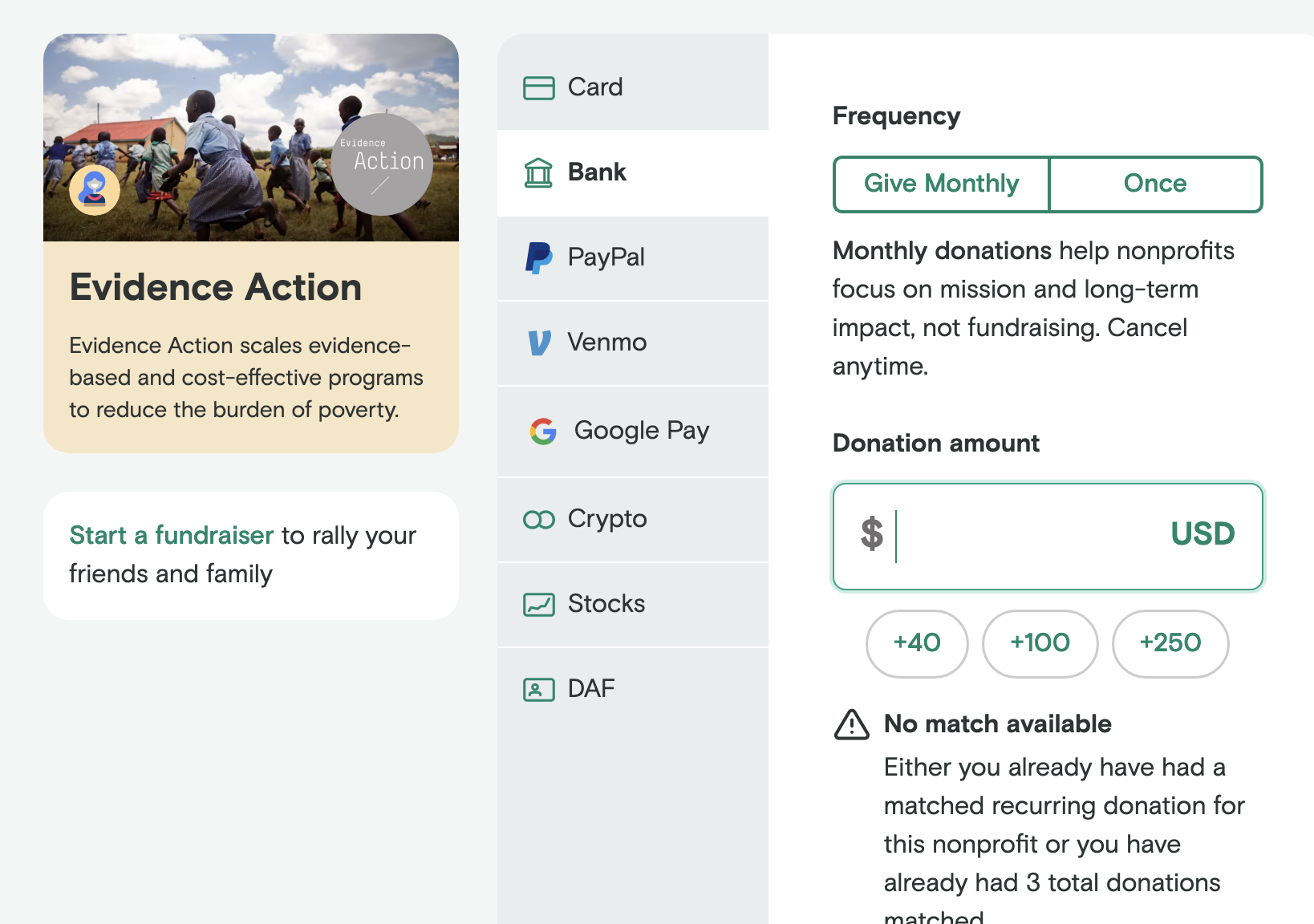From Nov. 1 - Nov. 30, or until funds run out, any donor who sets up a monthly donation to your nonprofit will be matched up to $50.00 of their monthly donation for the first two months. This must be a new monthly donation and not one that is currently active. This recurring donation will be automatically charged to the donor's payment method every month and matched another $50.00 for the month of December as well. In total, donors giving $100 ($50 in November and $50 in December) will have $100 matched ($50 in November and $50 in December). Donors who set up a monthly gift in December are not eligible for this match.
47
Nice. Just giving the thumbs up that last years promotion worked well, so I expect this one to do as well
Excited to see this is returning for another year! A few notes:
- This year's match is (currently) "only" for up to $50,000 (for reference, last year a total of $620K was matched), and might not last very long
- See e.g. my Every.org profile for a list of ~75 EA-aligned orgs on the site (as of Nov. 2021)
- Note that you can fund your Every.org account straight from your DAF
- Here's last year's post, with some helpful info in the comments too
There are still funds remaining, but it looks like each person can only set up three matched donations
It seems the match is still available but if you took advantage of last year's event you may be ineligible:
I know our team isn't super excited by this switch by Every.org. Will be interesting to see how it goes.

It seems the match is still available but if you took advantage of last year's event you may be ineligible:
